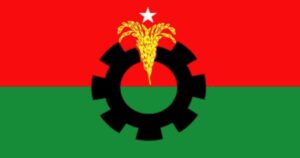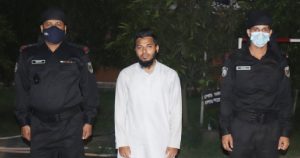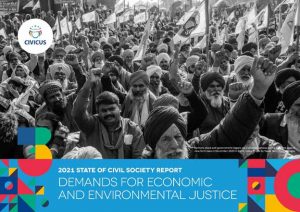Anisuzzaman Chowdhury
My close association with Kazi Zafar Ahmed (Zafar Bhai) began in earnest immediately after the independence of Bangladesh. Being in Chittagong, I did not have much opportunity to interact with Zafar Bhai earlier, especially because he was underground due to a “hulia” (arrest warrant) for declaring the programme of action for an independent people’s democratic republic of East Bengal on 22 February 1970.
I was with Mozammel Haque (at that time Secretary of the Biplobi Chattra Union, Chittagong District) and my close friend, Irtishad Ahmed (currently Professor of Construction Management at Florida International University) when I first met him. Zafar Bhai had a profound affection for me; he told me that he was inducted into progressive student politics in Rajshahi Government College by my eldest brother-in-law, Professor Momtazuddin Ahmed (playwright and former Minister Culture, Permanent Mission of Bangladesh to the United Nations).I am a product of the 1969 anti-Ayub mass uprising. Although it was led by Moulana Bhashani, Zafar Bhai played a critical role in developing strategies and organising support from the labour movement. The student movement turned into a mass uprising when Asaduzzaman was killed by a police officer shooting at close range during a protest rally on 20 January 1969, in front of the Dhaka Medical College Hospital heading towards Chan Khar Pool. Shaheed Asad was the president of the Dhaka Hall unit of the East Pakistan Students Union (Menon group) and General Secretary of the Dhaka branch. He was in Zafar Bhai’s house on 19 January to discuss the situation and spent the night there. Asad went to the protest rally wearing Zafar Bhai’s scarf. It is well known that Asad had this scarf when he was shot.
Zafar Bhai was in Chittagong sometime in January 1972 for an organisational tour and to discuss the future course of political activities. The struggle to establish a people’s democratic republic remained unfinished, but the left movement still was divided. Thus, the challenge was two-fold – unite the left movement, and continue the struggle for an exploitation-free democratic society. This was compounded by global and regional geopolitical realities, and the immediate threat of Indian expansionism with its military presence already in the country. Zafar Bhai’s analysis of the situation and articulation of a political course were mesmerising. He convinced us all of the need to build a mass political forum to maintain popular support behind the struggle for a just society and to resist Indian expansionism. In February 1972, during a mammoth public meeting at the historic Lal Dighi Maidan, Zafar Bhai declared the programme for an effective and responsible opposition party. That was the first meeting of an opposition party in independent Bangladesh.
I moved to Dhaka in mid-1972 and interacted with Zafar Bhai almost on a regular basis until I went to Canada for higher studies in 1978. This was disrupted briefly when BAKSAL was formed in early 1975 and all opposition political activities were banned, forcing Zafar Bhai to once more go underground. My contact with Zafar Bhai remained at a very low level for about 20 years between 1979 and 1999. This was because of two factors – my overseas residency, and my disagreement with his decision to join the national government of Gen. Ziaur Rahman. However, I must mention here that he wanted me to return from overseas and join him in politics again. Sometime in 1985 or 1986, he sent Ashraf Girani (then President of the Biplobi Chattra Union) to Singapore, where I was teaching at the National University; Girani Bhai could not convince me.
Sometime in 1999, Zafar Bhai came to Sydney and stayed in Mizanur Rahman’s house. Mizan Bhai was the cultural secretary of the Central Committee of the Biplobi Chattra Union during the mid- 1970s. Zafar Bhai called me from Mizan Bhai’s house and told me that he was suffering from various ailments. Mizan Bhai and I arranged for his treatment.
During this first visit to Sydney, Zafar Bhai met some senior political figures, including the Speaker of the New South Wales State Parliament. He attended one Parliamentary session and his attendance was officially recognised (recoded in Hansard). I accompanied Zafar Bhai to all of these meetings.
Zafar Bhai needed to stay in Sydney for a longer period for his treatment. So I approached the University of Western Sydney, where I was teaching at that time. The universities around the world have a programme of inviting senior political figures; many senior politicians, including former Presidents and Prime Ministers later become members of the faculty. Looking at the political career of Zafar Bhai, the University of Western Sydney decided to invite him as a Distinguished Visiting Professor. This is the highest honour for anyone in that category. In addition to regularly interacting with students and staff members, Zafar Bhai delivered two public lectures in that capacity. One public lecture was on Indian nationalism and the independence movement, and the second one was on the role of regional powers and the geopolitical situation in the sub-continent. Both lectures were attended by close to a thousand people – a cross-section of students, academics and political personalities. Zafar Bhai was brilliant and flawless in delivering these lectures. His arguments, analysis and articulation were superb. The two lectures are included in this memorial magazine.
During his stay in Sydney, one of the lower courts in Bangladesh convicted Zafar Bhai to 15 years in jail and a hefty fine or further 6 years in jail for non-payment in a case involving his donation of approximately 100 acres of his paternal property for a cancer hospital in Khulna. Zafar Bhai was deeply shocked by the premature death of Selim Khan of Chittagong due to cancer. Selim Khan was very dear to Zafar Bhai and his untimely death moved him profoundly. He wanted to dedicate a world class cancer hospital in Bangladesh to the memory of Selim Khan. This shows Zafar Bhai’s intense relationship with the rank and file in the party.
Upon investigation, the Australian authorities were convinced that the case was politically motivated and the court verdict was influenced by the government of the day. Therefore, the Australian government decided to grant Zafar Bhai a protection visa against political persecution.
Unfortunately, some Bangladeshis living in Australia did not like Zafar Bhai’s presence in Sydney, especially his high profile position at the University of Western Sydney. They started a very nasty campaign against him and contacted one journalist of the Sydney Morning Herald who was investigating allegations that some unwanted foreign nationals were granted resident visas in exchange for large donations to the Liberal Party, which was in power at that time. They succeeded in having front-page coverage of Zafar Bhai’s alleged corruption when he was a minister.
Naturally, a large number of journalists gathered in front of his apartment next morning. However, they were surprised to see the condition of Zafar Bhai’s apartment. They could not reconcile a very ordinary living in a small run-down appointment by a person alleged to have amassed so much corrupt money. Zafar Bhai could not even entertain the journalists with any refreshments as there were not enough cups and plates or chairs for them to sit! On further investigation, the journalists were convinced that the alleged story of corruption had no basis; it was false and politically motivated. Therefore, the Sydney Morning Herald published unconditional apologies for publishing a baseless report without prior investigation of the allegation. Zafar Bhai was fully exonerated.
How will history judge Kazi Zafar Ahmed?
No doubt, history will judge Kazi Zafar Ahmed very favourably for his role in organising the first student revolt against the martial law regime of Ayub Khan; for his contributions to the labour movement and the 1969 mass uprising, culminating in the declaration of a programme of action for establishing an independent people’s democratic East Bengal; for his part in organising the liberation war; and for his role in opposition politics. He was on ascendancy in his political career, first as the General Secretary of the National Awami Party (Bhashani) and then as the General Secretary of the United People’s Party during the post liberation period until the late 1970s.
Unfortunately, however, Kazi Zafar Ahmed became controversial after his decision to join the National Government of General Ziaur Rahman. Kazi Zafar argued that it was not a usual military regime that had usurped power through a coup d’état; General Zia was a valiant freedom fighter; he was forced to take over as the country was plunging into a chaos, and he needed support from the progressive forces of the country, especially when the independence was still fragile. Zafar Bhai genuinely thought that it was an opportunity to shape the country’s destiny. However, that decision was not supported unanimously by his close political associates and caused a rift among them. I was one of those who at that time thought that supporting the Government of Zia from outside was one thing, but the decision to join a regime led by the military was wrong.
For nearly two decades, Zafar-Rano-Menon were an inseparable trio of progressive politics in Bangladesh. For many political workers, the parting of Haider Akhbar Khan Rano and Rashed Khan Menon with Kazi Zafar Ahmed was unthinkable. But unfortunately that unthinkable happened when Zafar Bhai decided to join the Zia Government, weakening the progressive movement in Bangladesh. When Kazi Zafar eventually left the Zia Government due to irreconcilable differences, not all of his former political associates who originally joined him came back with him. This time, he lost Abdul Mannan Bhuyan and Abdullah Al-Noman. Thus, by the early 1980s, the political force of Kazi Zafar was significantly diminished.
Kazi Zafar’s decision to join General Ershad’s regime was the most controversial one. It came as a big shock and he appeared an opportunist, especially when his decision came at the height of an anti-Ershad movement in which he was playing a critical role. However, one can perhaps rationalise Kazi Zafar’s decision to join Ershad considering the fact that by then, Kazi Zafar had lost most of his closest political associates, which considerably weakened his position in the political power game. He remained with General Ershad until before the last general elections in 2014.
Now before we judge Kazi Zafar Ahmed harshly, we have to remember that almost all leading political personalities switched their alliances during the post 1975 period. Some of them did it more than once until recently, when politics has become extremely polarised and the left force has been almost decimated. So Kazi Zafar’s political moves during this period have to be seen in that context; his moves were part of this polarisation process in domestic politics of Bangladesh, but global geopolitics also played a role.
Geopolitical developments and the Left movement in Bangladesh
There has also been sea change in the international political landscape since the 1980s. The progressive forces all over the world became complacent after the end of the Vietnam War in 1975. But the defeated conservative forces regrouped, and in only 5 years, two most right-wing leaders got elected at the centre of the capitalist world – Ronald Reagan in the USA and Margaret Thatcher in the UK. They unleased a campaign against the union movement and ushered in the era of the unfettered expansion of capitalist markets. Privatisation, liberalisation and globalisation became the mantra that saw the decline of the power of the working class and the rise of the power of multinational companies.
In China, Reformist Deng Xiaoping emerged as the paramount leader after the death of Chairman Mao and the Prime Minister Zhou Enlai in the mid-1970s. The Chinese economy is now indistinguishable from a capitalist market economy. The Soviet Communist Party appeared unprepared when Leonid Brezhnev died in 1982 after presiding over the country for nearly two decades since 1964, and eventually the Soviet Union collapsed in 1991.
The left leaders in Bangladesh who always looked to Moscow and Beijing found themselves directionless. They were completely unprepared to respond either to the rise of the global capital or to provide alternative economic, social and political programmes based on the objective socio-economic conditions of the country. They did not know how to protect the interest of the working class and the domestic economy in a globalised world. Unfortunately, the left leaders failed to assess the objective conditions in Bangladesh. They seemed to have tried to fit Bangladesh’s conditions to the theories developed in either Moscow or Beijing, instead of adapting or improvising theories to fit the conditions of Bangladesh. As a result, they became blind followers of one of these centres and when radical changes happened there, they were completely confused. And those left factions who chose extremist paths of waging arms struggles degenerated into anarchism. Having failed to provide pragmatic political, economic and social programmes in a fast-changing world, the left leaders of Bangladesh gradually became isolated from the people and faced an existential challenge.
Thus, their personal political survival depended on finding new alliances with major political parties and this perhaps explains why left political leaders moved from one side to the other. Therefore, asking who was right and whose move was wrong is not the correct question; it was a matter of personal political survival. Those who decided not to join any major political parties remained at the fringe with almost no influence. Therefore, Kazi Zafar Ahmed’s shifting of sides was not different from those of other left political leaders, such as Rashed Khan Menon or Hasanul Haque Inu who even contested two recent elections with the Awami League’s symbol of a boat instead of their respective political party’s election symbol!
Epilogue
What would have happened had Zafar-Rano-Menon remained united? Unfortunately, history cannot be repeated here and we cannot conduct a counterfactual experiment. Perhaps, however, some tentative answers to the question could be found by interviewing the large number of followers of the trio. In the absence of such an exercise, two possibilities can be considered.
The first possibility was the stronger bargaining power with General Zia; the trio could have had effective control of the government and Kazi Zafar would not have had to leave the Zia Government. One could even say that Kazi Zafar’s resignation and the lack of full backing from the left political leaders forced General Zia to seek support from right-wing leaders such as Sabur Khan and Shah Azizur Rahman.
The second possibility was the rise of a strong social democratic party led by the trio. This would have gone a long way to restoring and consolidating democracy in Bangladesh. Perhaps this was not clear to those in the party who opposed Kazi Zafar’s decision to join Gen. Zia’s national government, as they were still thinking of establishing a socialist State without realising what was happening around the world. The influence of the Communist Party of Bangladesh (Leninist) on those leaders proved to be very costly for Bangladesh.
Clearly, the winner would have been Bangladesh under any one of the above possibilities had the trio of Zafar-Rano-Menon remained intact. Therefore, history will most likely judge them simultaneously as a trio and not individually. – From Atiqur Rahman Salu leader of the expatriate Bangladesh Community in New York.




